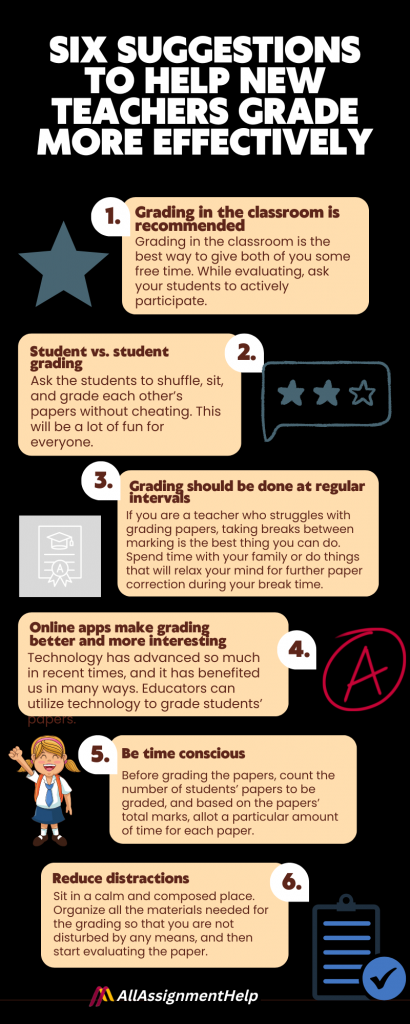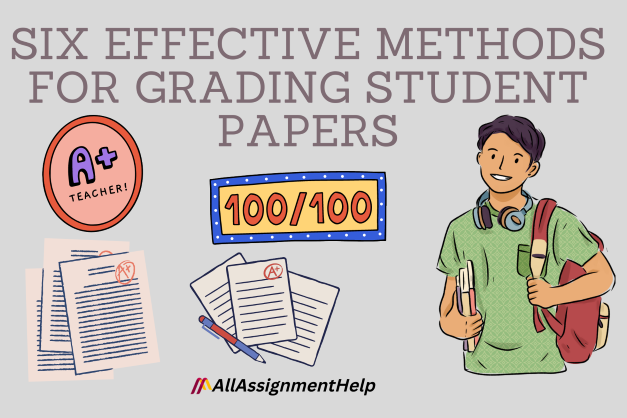Table of Contents
We’ve all seen and heard that students struggle with writing assignments and studying for exams. Some of us even sympathize with them and try all the possible ways to make learning fun for the children. But have we ever considered the difficulties that teachers face? If students are studying for exams all hours of the day and night, teachers must be preparing the question paper as well. There should be no comparison between the teachers and students; each of them is doing their work. But the thing is, we see the problems of kids but ignore those of teachers. Nobody realizes how difficult it would be for the educator to grade every single student’s paper, regardless of how they write or what they do. Grading 70 student papers from various classes is a difficult task requiring much dedication and patience.
Are you a teacher who faces problems evaluating assignment papers and feels like quitting? It is okay to feel that way, but rather than quitting, you must find a way to sort it out. This blog post by allassignmethelp.com can help you solve this problem. In this article, we will go over a few methods for grading papers quickly and easily.
Also Read: Try These Ways to Increase Social Activeness In The Students
What Is Grading?
Grading is a result of the student’s performance in the academic year. It is a tool that determines the future of the students and how successful they will be. In today’s world, grades are more important than student knowledge. This is why the children try their best to score high marks in their assignments and exams. Many students work and study day and night to excel in their academics. at the same time, a few of the students seek online assignment help to score their desired grades at an affordable price. Grades are not only determined based on academic performance. Many other factors, like student behavior in class, attendance, and other activities, contribute to the overall scores of the children.
Also Read: Why Teachers Should Encourage Students To Write Assignments?
Six Suggestions to Help New Teachers Grade More Effectively

As a new teacher, you might find grading an interesting task. While grading your students’ papers, you would feel superior to them. However, slowly, your morale could not be the same, and you may not be able to grade in the right way. Sadly, it is a fact that grading is a boring task where the teachers spend hours and hours of their time reading the papers.
If the paper was from a top student, grading would be easy, but for slow learners, it is just not easy. You have to read inch by inch and carefully grade the marks. Even slight negligence from your side can destroy the future of the kids, and I am sure no teacher would want this to happen. Hence, it is a must for you to enjoy grading, no matter how boring it seems. We will attempt to tell you how to make the tedious task of grading more interesting in this writing piece.
1- Grading in the classroom is recommended
Most teachers have the habit or mindset of not wasting any time in the classroom. They even take other classes for five minutes, but they will never compromise their class hours. But let me tell you that if you are one of those teachers, you need to change things. Regularly teaching classes to students will bore them as well as you. You must give free time to both them and yourself. Grading in the classroom is the best way to give both of you some free time. While evaluating, ask your students to actively participate. Doing all of these will grow the enthusiasm in the students, and rather than thinking, “Can I pay someone to do my assignment?” they will spend time on learning, which will improve their academic grades.
2- Student vs. student grading
Comparison grading between students is not a thing most teachers do. This is because they think grading should always be done in private and no students should interfere with it. But if you want to make grading interesting for both you and the students, you should let them evaluate each other’s answer papers. Ask the students to shuffle, sit, and grade each other’s papers without cheating. This will be a lot of fun for everyone. Apart from being a fun activity, this also has two benefits: one is that your papers will be graded easily, and the second is that evaluating papers on their own will help the students learn from their mistakes. Once they understand the difficult process of grading, they will never scribble anything on the answer paper.
3- Online apps make grading better and more interesting
Pencil, pen, and paper marking are something that many teachers are used to. They believe that this is the only way to evaluate and grade the answer papers. Technology has advanced so much in recent times, and it has benefited us in many ways. Educators can utilize technology to grade students’ papers. Socrative Teacher, Teacher Gradebook, GradeBook Pro, Edmodo, and Kahoot are a few of the apps that can save teachers time spent on grading.
The main difficulty the teachers face is grading students’ papers full of grammatical errors and other mistakes. How about if they did not submit any errors in the papers? then the grading process won’t be difficult, right? The teachers must encourage the students to use apps like Grammarly, Quillbot, or Paper Writer before submitting their assignments. Editing the answers before submitting them will surely reduce the teachers’ stress.
4- Grading should be done at regular intervals
We often tell students, whether they are teachers or parents, to take a break between their study schedules. We teach them the importance of taking regular breaks and how it benefits their learning. But no one asks the teachers to take breaks between their classes. If the students are studying for 9 hours, then the teachers are also teaching for 9 hours. Both of them do their jobs perfectly, and to be honest, teachers’ work is more complicated than that of students. The educators even work on the weekends and at night during the exams, grading the papers. They are also human beings, and evaluating papers from various classes and subjects is not an easy task.
If you are a teacher who struggles with grading papers, taking breaks between marking is the best thing you can do. Spend time with your family or do things that will relax your mind for further paper correction during your break time. When a student is having difficulty understanding a concept, they seek online class help; why not the teachers? If they can find a solution to their problem, then why not you? Whenever you feel tired or bored of grading, take a break for a few hours.
5- Be time conscious
Before grading the papers, count the number of students’ papers to be graded, and based on the papers’ total marks, allot a particular amount of time for each paper. For example, if the question paper is worth 100 points, you can allot 30 minutes for each paper, or if it is worth 50 points, you can separate 15 minutes for evaluating. Try to finish the paper within the time frame you’ve set aside for correction. You can also set a timer if you want. While grading, you might find some papers that require more time but be strict and cut your time short. Spending more time on assignment grading will surely make you bored or tired. So don’t do it.
6- Reduce distractions
There are two reasons why teachers feel bored while grading their students’ papers. One is that they spend an inordinate amount of time correcting a single paper. Another issue is that they are easily distracted or begin grading by sitting in between family members or frequently using their mobile phones. As I said earlier, grading is an important tool that determines the future of the students, so you should not be distracted while grading the papers. Sit in a calm and composed place. Organize all the materials needed for the grading so that you are not disturbed by any means, and then start evaluating the paper.
Therefore, the above are a few of the things that the teachers should keep in mind while grading the assignments of the students. As a teacher, you must have your evaluating process, but implementing the aforementioned tips will make your marking process easier and less tedious.
Also Read: How US Students Can Solve Their Assignment Writing Problems
Frequently Asked Questions
| Question 1: What are the various methods of grading? Answer 1: Learning objects, the highest grade, the average grade, and the sum grade are the four techniques of grading. |
| Question 2: How many types of grading systems are there in the world, and what are they? Answer 2: There are seven types of grading systems in use around the world. They are Grading Percentage, Letter Grading and Variations, Standard-referenced Grading, Mastery Grading, Common Scale, Rating of Expectations, and Narrative Grading. |
